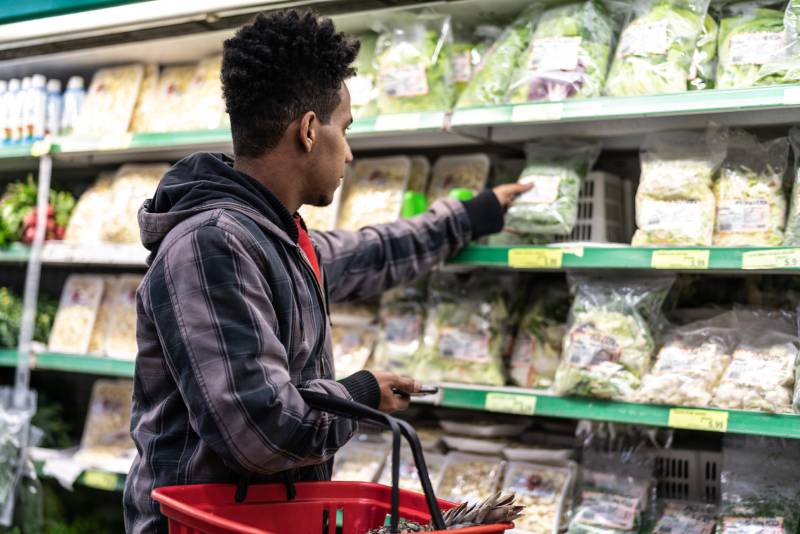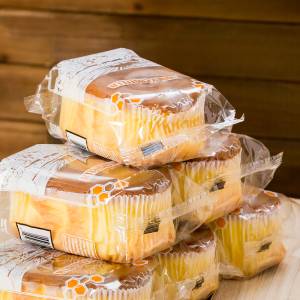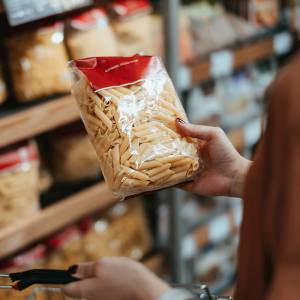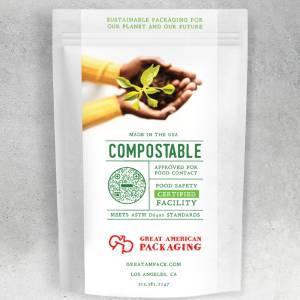
4 Food Trends to Know in 2022
2022/06/29 9:19 am
As modern consumers, we are subject to global influences that shape food industry trends and sales worldwide. While nothing new, the lasting impacts of a pandemic, supply chain disruptions and labor shortages have physically and mentally shifted the way we think about and approach buying food.
Consumer trends can cause disruptions, but they also create new opportunities in the market. As we enter the second-half of 2022, explore four consumer food trends worth considering as you plan around your food manufacturing and packaging processes.
1. Polarization of Eating Habits

In the first half of the year, consumer food trends were driven by a desire to feel good. This manifested in two very different ways: healthy eating and indulgence. Ongoing covid concerns encouraged consumers to choose foods that promoted healthy living and boosted energy; an estimated 54% of consumers purchased foods to improve their wellbeing1 . Others, weary from the pandemic, sought out indulgences to improve their emotional wellbeing and mood.
For both, a return to busy schedules has reprioritized the value of convenience. On-the-go lifestyles have returned, as have gatherings and parties. People are once again looking for healthy, convenient food solutions that will make them feel good.
To cater to these opportunities, food manufacturers need agile, custom packaging solutions that support a great customer experience. Requesting a consultation with a custom flexible packaging manufacturer is a great first step in making sure your product packaging is optimized to perform.
2. Demand for Increased Shelf Life

As inflation reaches a 40-year high2, consumer concern over increased food prices continues to grow. According to IDDBA, 92% of consumers believe food prices are somewhat or a lot higher than last year, of whom 95% are concerned about it. In order to move beyond these concerns, food promotion has shifted from price-driven conversations to a benefits-focused approach.
To counter the impacts of lengthened supply chains and ensure peak product quality, food products must start off fresh and stay fresher for longer. As a product’s first and primary line of defense, packaging must be designed for its unique environmental and physical needs as it travels from the manufacturing plant to the shelf, then to the consumer’s home.
To identify if your packaging partner prioritizes food safety, look for these key indicators: the use of FDA- and USDA-approved resins, up-to-date, GFSI-recognized food safety certifications and excellent product traceability.
3. Return to In-Person Shopping

The enactment of stay-at-home orders increased demand for online grocery shopping options. Even as communities return to normal, some shoppers prefer to shop fully online. As supply chain challenges and increased prices continue to strain shoppers’ wallets, online options give greater freedom to monitor spending and take advantage of money-saving deals2.
A majority of shoppers, however, prefer in-person grocery shopping. It’s estimated that 67% of shoppers still do all their grocery shopping in-stores, with 5% shopping fully online and the remaining 28% splitting their shopping lists between the two2.
To drive sales, brands need to be ready to show-up online, as well as make an impact on the store shelf. As a first impression of your brand, product packaging needs to align with your values and catch the consumer’s eye at point-of-purchase. Working with a packaging partner that specializes in high-quality, state-of-the-art printing ensures your packaging will come to life and stand out from your competitors.
4. Sustainability-Driven Purchasing

As GEN Z matures into adulthood, their buying power continues to grow, alongside the social responsibility they expect from product manufacturers. As a whole, GEN Z is demanding greater product sustainability, ethical material/product sourcing and community-support by shopping local. An estimated 73% of GEN Z members believe they can make a difference through personal choices3 and they are choosing products that align with their values.
Demands for environmentally-conscious food chains are also being motivated by impending legislation. Last year, the UN Climate Change Conference and Food Systems Summit shared its increased focus on a sustainable food supply4 . To survive, brands need to be adaptable and forward-thinking. A great place to start is with sustainability.
Increasing sustainability can begin with small steps. Review the materials your products are made of and their impact on the environment. Plastics take less energy to produce than alternative materials like paper, glass and aluminum, and can help reduce food waste by extending product shelf life.
Packaging solutions should also be assessed for overpacking. Excessive packaging creates unnecessary waste with no benefit to the product.
As a final stage, brands can consider eco-friendly packaging options, like fully-compostable and recyclable solutions. Working with a trusted packaging partner can help you choose the right solution for your products and reduce your impact on the environment, without affecting product quality.
Choose a Partner You Can Trust
High-quality packaging is a critical part of the food manufacturing supply chain – products can’t leave your facility without it. Our team is committed to staying on top of trends to ensure we design the best packaging solutions for our customers. This is one of many ways in which we deliver white glove service that sets us apart from the rest.
Reach out to us today to see how we can help you with your food packaging needs.
1 https://www.ift.org/news-and-publications/food-technology-magazine/issues/2022/april/features/top-10-functional-food-trends
2 IDDBA: https://www.iddba.org/
3 https://www.fooddive.com/news/6-trends-shaping-food-and-beverage-growth-in-2022/616457/
4 https://www.ift.org/news-and-publications/blog/2021/top-5-2022-food-trends-from-spi
RECENT POSTS
- Quality Printing: Your Brand’s Most Important Advocate
- EPR PACKAGING LEGISLATION: IF YOU ARE A BRAND OWNER, YOU WILL BE AFFECTED
- WEBINAR | EPR LEGISLATION: WHAT BRAND OWNERS AND MANUFACTURERS NEED TO KNOW
- GREAT AMERICAN PACKAGING WELCOMES MARK MCANLIS AS VP OF SALES
- 5 Packaging Tips that Will Increase Your ROI

